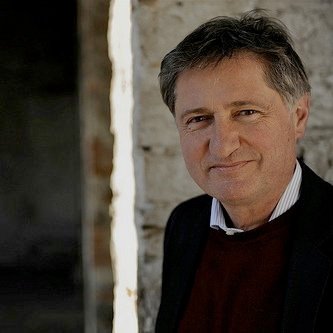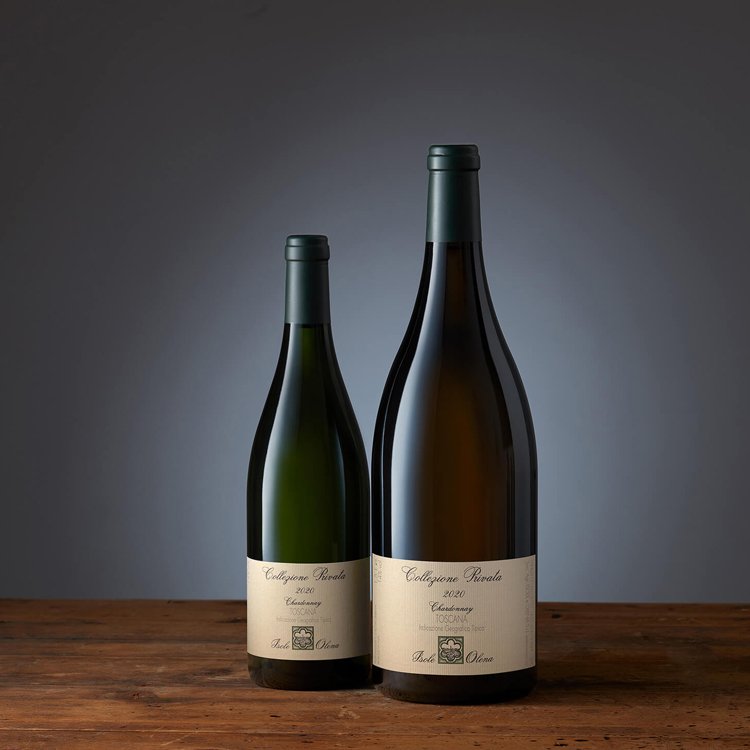▻ Paolo de Marchi
In conversation with Paolo de Marchi
Episode Summary:-
At the end of this year, Paolo de Marchi leaves Isole e Olena, the winery which helped remake the image of modern Italian wine and is today regarded as an icon of the industry. On the eve of his departure, Sarah Kemp travelled to Tuscany to talk to him about his remarkable Great Wine Life. His family came from the Piedmont, and his father bought the two hamlets of Isole e Olena in Tuscany in 1956, where Paolo spent his holidays as a boy – his first sight of the property was when he was seven years old, at Christmas time. “It was going back in time, the balance between man and nature is clear in my mind,” he says, and tells Sarah how he always wanted to be in agriculture even as a small boy – tractors, not cars, were what interested him. Inspired by the Tuscan landscape, he even designed a label for the property as a child, but for his father the idea of him running the estate was not met with enthusiasm. “It is a bottomless pit, it will never happen,” he told the young Paolo.
The 33-hectare property was run down, but Paolo was determined to farm, and wine appealed to him. “It is very rare in agriculture to get to the final consumer,” he points out. After studying agriculture at university and Turin, he left to visit California, which subsequently proved a to be fortuitous decision. He arrived at Isole e Olena in 1976, 25 years old, and immediately made a list of priorities. “My top priority was to understand Sangiovese!” he said with a broad smile. He started tagging the vines which consistently gave the best results, and picked the vines which had been tagged seven to eight times to find the best clones. The other priority was to sell the wine, and Paolo talks about how his introduction to Darryl Corti in Sacramento, California, changed his fortunes when Darryl backed the wine by ordering half a container and persuading another merchant to buy the other half, even though he had never tasted it. The young Paolo quickly found himself as a leader in California’s discovery of the new incarnation of Chianti.
While the wine’s reputation was growing, especially in the US, the 1980 launch of the 100% Sangiovese Cepparello, one of the first Super-Tuscans, brought further acclaim. “Cepparello has helped me understand what I wanted to do,” he says. By the second half of the 1980s, Paolo had created a soil map of Isole e Olena (not commonplace then). “Part of the vineyards where we were selecting Cepparello, we were actually selecting the soil,” he reveals. The fact he was in control of all aspects of the estate – viticulture, winemaking, and commerce – he considers an advantage, but he tells Sarah, “The biggest achievement I consider is to create from a bottomless pit a very financially healthy estate, you cannot create quality unless you have a financially healthy estate.” Distribution has been key, and he reflects fondly on meeting a young David Gleave MW, and Nick Belfrage MW, who imported his wines when they were at Winecellars in Wandsworth, London in the early 1980s.
““The biggest achievement I consider is to create from a bottomless pit a very financially healthy estate, you cannot create quality unless you have a financially healthy estate.” ”
Today, the estate consists of 56 hectares, with 10 per cent of the production given over to Chardonnay, which has a cult following. The success of Chardonnay came by chance: “The Chardonnay project was not a project, it was part of the effort to solve the problem we had at the end of sharecropping, when we grafted Chardonnay onto Trebbiano vines, I had no idea I would bottle a pure Chardonnay… I grafted Chardonnay, no experience, no experiments.” He reveals how he did not learn winemaking at the school, but by talking to the top producers. He is still consistently trying to improve, as he believes you are only as good as your last vintage, and points out that there is only one opportunity. “I make the wine in my life what a chef makes in less than two months”.
Sarah asks what advice he would give the young Paolo today. “To the younger Paolo – you cannot give the maximum if you do not take time off!” He sold the winery to the EPI group in 2022, (they are the owners of Biondi Santi and Charles Heidsieck), and has decided to leave at the end of 2023 to return to the Piedmont to be with his son, who has an estate in Lessona, Alto Piedmonte. He is wistful. “I am broken-hearted of course, but even if my son took over it will change. The man who makes the wine is part of the wine, you change the man, you change the wine.” He remembers, in 2006, having two Australian winemakers work with him; they all made Syrah from the same grapes, but the results were different, the best being a blend of all. Will he be hands-on at his son’s property? Can he resist being involved? “I don’t want to be the face of the estate,” he says, he will help with the viticulture, but what he is looking forward to is spending time travelling with his wife to Greece to pursue his love of ancient history. What he leaves is a great legacy of his life’s work in the bottles which are enjoyed around the world and an estate at the top of its game. No bottomless pit at all.
Running Order:-
-
0.00 – 22.15
“It’s very rare in agriculture, even with the smallest producers, to be in touch with the final consumer, wine is a possibility to know the people.”
– Paolo’s father buys Isole e Olena in 1956.
– Paolo’s first memories of Isole e Olena as a small boy.
– Paolo’s desire to work in agriculture and his father’s reaction to running the estate.
– First trip to the US.
– The state of the vineyards when he arrived in 1976.
– Paolo’s list of priorities and desire to understand Sangiovese.
– Launching Cepparello in 1980, one of the first Super-Tuscans.
– Early meeting with Darryl Corti in California and becoming the leading Chianti there. -
22.16 – 42.53
“The biggest achievement I consider here is to have created from a bottomless pit a very financially healthy estate, you cannot create quality unless you have a financially healthy estate.”
– Soil research in the early 1980s.
– Meeting young David Gleave MW and Nick Belfrage MW, and importing to the UK.
– How Isole e Olena’s Chardonnay came about by chance.
– His philosophy of winemaking.
– What Paolo would now advise his young self.
– His future plans, having sold to the EPI group.
RELATED POSTS
Keep up with our adventures in wine








Hannes Myburg talks to John Stimfig about running the iconic South African Meerlust estate, which is celebrating its 50th vintage.